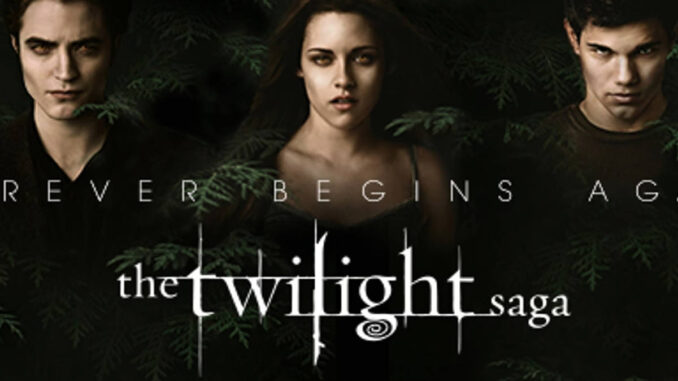
Behind the Velvet Curtain: Unearthing the Twilight Phenomenon
The year 2008 dawned, and with it, a peculiar kind of magic descended upon the global consciousness. It arrived not on broomsticks or through wardrobes, but whispered through the pages of a young adult novel and then exploded onto cinema screens in a haze of forest green, brooding gazes, and skin that shimmered like diamonds. Twilight was more than a film series; it was a seismic cultural event, a vampire-werewolf phenomenon that redefined a genre and captivated millions. But beneath the surface of this glittering, angst-ridden romance lay a complex tapestry of creative decisions, calculated risks, and unexpected alchemy – a trove of "secrets" that reveal the true genius behind its inescapable grasp. This essay, a dive behind the scenes into the "md07" of its making, seeks to illuminate the deliberate craft and accidental genius that forged the enduring legend of Bella, Edward, and Jacob.
One of the most potent "secrets" of Twilight's success was its audacious reimagining of classic supernatural archetypes. Stephenie Meyer’s source material presented vampires not as purely monstrous, but as beings of exquisite beauty and profound internal struggle. The film adaptation, under Catherine Hardwicke's keen eye, meticulously translated this vision. The "sparkling vampire" – initially a point of derision for some traditionalists – became Twilight's most iconic visual signature. It wasn't merely a special effect; it was a thematic declaration. It spoke of vulnerability and the tragic irony of immortality, a dazzling curse that made camouflage impossible. Similarly, the Quileute shapeshifters, rooted in Native American lore, offered a grounded, earthy counterbalance to the vampires' ethereal otherworldliness. The tension between these two distinct supernatural cultures, each with its own moral code and inherent power, created a dynamic rarely seen in fantasy – a love triangle not just of hearts, but of species and ancient rivalries. The "secret" here was not just what they were, but how their unique physiologies and mythologies were woven into the very fabric of the story's emotional core.
Beyond the lore, the casting of the central trio – Kristen Stewart as Bella Swan, Robert Pattinson as Edward Cullen, and Taylor Lautner as Jacob Black – proved to be an act of serendipitous brilliance. The "secret" was not just finding talented actors, but individuals who embodied the very essence of their characters' specific, often contradictory, appeals. Stewart brought a raw, almost painfully authentic awkwardness to Bella, making her an everywoman whose internal monologue felt instantly relatable despite her extraordinary circumstances. Pattinson, with his intense stare and palpable sense of tortured nobility, transformed Edward from a merely handsome figure into a truly enigmatic and dangerous object of desire. His portrayal of eternal longing and self-loathing was the magnetic North of the franchise. Lautner, initially a supporting character, grew into a formidable third point of the triangle, his youthful exuberance and steadfast loyalty offering a visceral, earthy alternative to Edward's icy allure. The "secret" lay in the electrifying, often chaotic, chemistry between these three, both on and off-screen, which fueled the "Team Edward vs. Team Jacob" phenomenon and made the stakes of the romance feel profoundly real to its audience.
Furthermore, the production's commitment to creating a tangible, atmospheric world was another unsung "secret." Filmed predominantly in the perpetually overcast, lush Pacific Northwest, the aesthetic of Twilight became as iconic as its characters. The constant mist, the towering, ancient trees, the muted greens and grays – this was not just a backdrop, but an active participant in the story. It provided the perfect habitat for vampires who avoided sunlight and for werewolves connected to the land. The initial films, produced on relatively modest budgets, relied heavily on practical effects and ingenious camera work to convey superhuman speed and strength, rather than overwhelming CGI. This grounded approach gave the early installments a gritty realism that later blockbusters, with their ever-increasing digital wizardry, sometimes lacked. The "secret" was the conscious decision to root the extraordinary in the ordinary, making the fantastical elements feel more believable and immediate, drawing the audience deeper into Bella's bewildered perspective.
Ultimately, the most profound "secret" of the Twilight phenomenon was its uncanny ability to tap into the deepest anxieties and desires of its target audience, primarily adolescent girls. It wasn't just a vampire story; it was a coming-of-age narrative steeped in themes of first love, identity, belonging, and the overwhelming intensity of emotion. The story offered a protagonist who felt ordinary but was chosen for something extraordinary, resonating with anyone who felt overlooked. It explored the push and pull of dangerous attraction versus safe affection, the fear of change, and the allure of the forbidden. The "secrets" woven into its narrative were universal: the longing for a love that transcends death, the ache of unrequited affection, the desire to be seen and understood. The "md07" of its genesis thus points not just to a sequence of production decisions, but to a profound psychological resonance that allowed millions to project their own hopes and fears onto the brooding vampires and loyal werewolves of Forks.
In retrospect, Twilight's triumph was no accident. It was the culmination of a unique vision, a daring adaptation, inspired casting, and an intuitive understanding of the cultural zeitgeist. The "secrets" from behind the velvet curtain – the reimagined myths, the electric human chemistry, the atmospheric world-building, and the profound emotional connection – converged to create something far greater than the sum of its parts. Twilight didn't just present a love story; it presented a world, a choice, and a feeling that, for a generation, became synonymous with the intoxicating, dangerous, and utterly unforgettable rush of young love in the shadow of the supernatural. Its legacy continues to shimmer, a testament to the enduring power of its carefully guarded, yet universally understood, magic.
